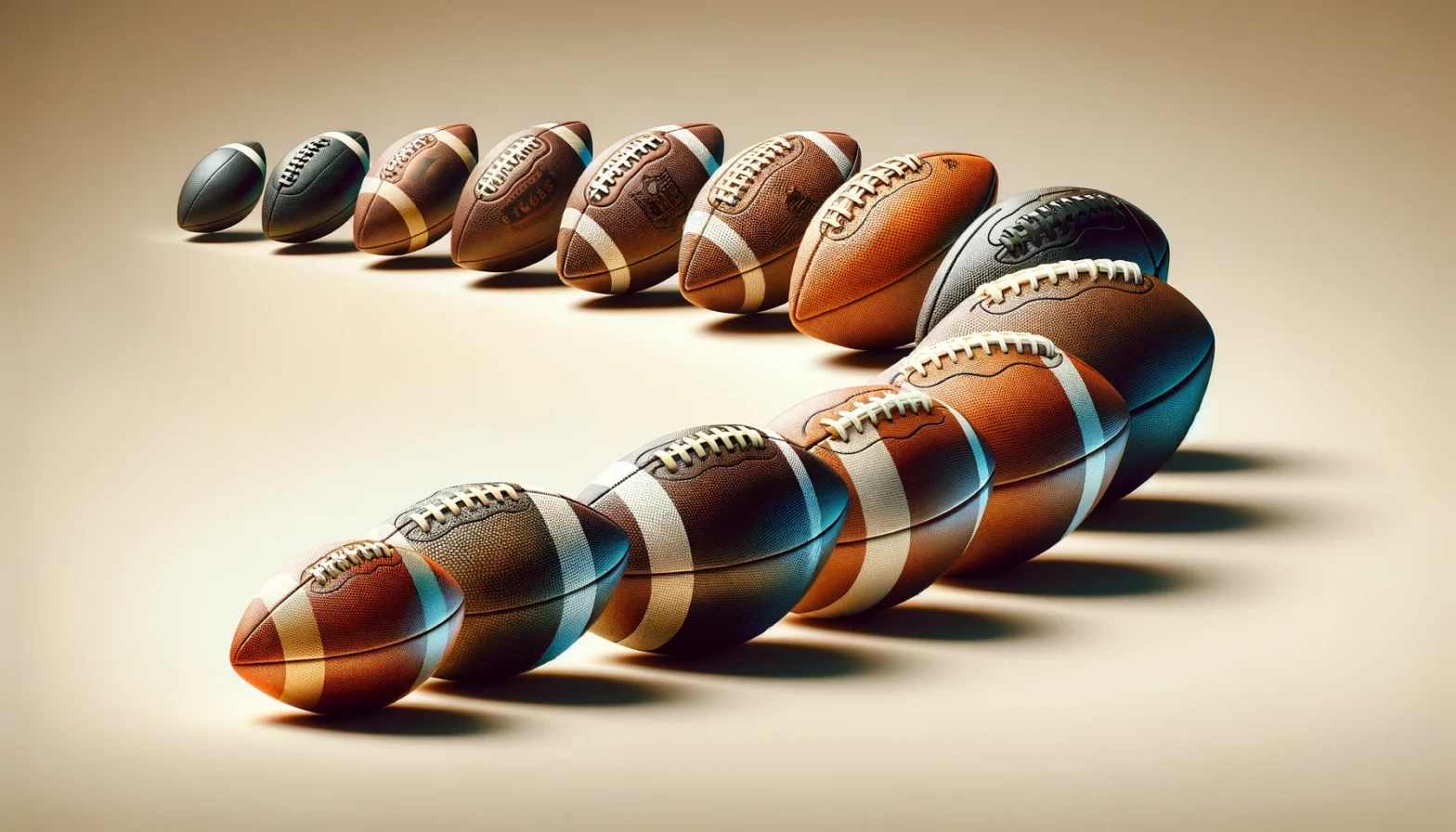NFL Balls: The Evolution & Production Of The Football
In American football, the ball itself—often simply called the NFL ball—holds a pivotal role in the game’s history and evolution. Throughout the National Football League’s storied past, the football has undergone numerous transformations, adapting to changes in play style, technology, and safety regulations. This article delves into the history of NFL balls, examining their material construction, the quantity used in games, and other key aspects that underline their significance in professional football.
Evolution of NFL Balls Through History
The NFL ball has seen several significant changes in design and technology, reflecting the league’s adaptation to the evolving nature of the game.
1900s: The original balls were more rounded, better suited to a game that focused heavily on running and kicking rather than passing.
1940s-1950s: The introduction of a more oval shape facilitated easier passing, which helped evolve the game into a more dynamic sport focusing equally on running and passing.
1970s: Post the NFL-AFL merger, the unified league adopted a standardized ball size and shape, which helped formalize the game further.
Modern Enhancements
Recent decades have seen advancements such as water-resistant treatments and improved leather texturing. Technological integrations such as chip technology for tracking speed, rotation, and location during play are currently being tested to enhance analytics and viewer engagement.
What Are NFL Balls Made Of?
The NFL’s football has its roots in the early rugged days of the sport, originally made from animal bladders covered in leather. As the sport professionalized, the materials used evolved significantly. Today, the composition of NFL balls is a reflection of over a century of innovations and refinements.
Leather Quality and Source: Modern NFL balls are crafted exclusively from high-quality cowhide leather. The leather is sourced from specialized tanneries, primarily located in the United States, that adhere to strict standards for durability and performance. This leather is not only durable but also treated to ensure it provides the tackiness players need for a better grip.
Construction Process: The construction of an NFL ball is a meticulous process, involving the hand-stitching of the leather around a rubber or urethane bladder. This bladder is what gives the ball its air retention and bounce characteristics. The laces, also made of leather, are not merely decorative but provide essential grip points for quarterbacks, receivers and other NFL ball carriers.
How Many Balls Are Used in an NFL Game?
The number of footballs used in a typical NFL game often surprises many fans due to the sheer volume required to maintain the standard of play under various conditions.
Game-Day Preparation: Every NFL stadium is required to provide 12 primary balls every game, which referees inspect before kickoff to ensure they meet NFL standards for weight, size, and air pressure. For outdoor games, an additional 12 balls are prepared exclusively for use in kicking plays.
Weather Conditions and Ball Rotation: In games with adverse weather conditions like rain or snow, additional balls are provided to keep play as consistent as possible. Wet or muddy balls are rotated out in favor of dry ones to maintain a standard level of playability.
Current Standards and Specifications
NFL regulations are very specific about the characteristics of the footballs used in official games. These standards ensure that despite the handcrafted nature of each ball, consistency is maintained across the board.
Size and Weight: An official NFL ball weighs between 14 and 15 ounces and has a long circumference of about 22 inches and a short circumference of about 11 inches.
Pressure and Inspection: Balls must be inflated to a pressure between 12.5 and 13.5 pounds per square inch. Each ball is tested with a gauge by officials before the game to ensure compliance.
Technological Innovations of The Football and Future Trends
As technology continues to advance, the NFL is exploring new ways to integrate it into the game. This includes using ball-tracking technology to provide real-time data on the ball’s position on the field, its speed, and how it is handled by players during the game. Such data could lead to new strategies and metrics for performance analysis.
The NFL ball, a key component of America’s favorite sport, has come a long way from its humble beginnings. Its evolution mirrors the development of the sport itself—from a simple game of running and kicking to a complex, strategic battle combining athleticism, technology, and entertainment. As the NFL continues to evolve, so too will the technology and standards surrounding the iconic NFL ball, ensuring it remains at the heart of the game for years to come.

